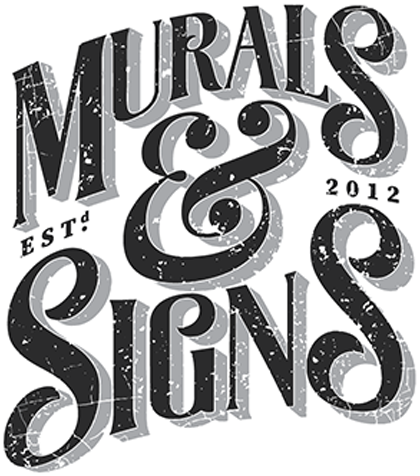Embarking on a commercial mural project can be an exciting endeavor for both artists and clients. However, navigating the intricacies of pricing can be a challenge, often leading to common pitfalls that can impact the success of the project. This comprehensive guide explores key strategies to avoid these pricing pitfalls in commercial mural projects, offering insights, tips, and practical advice to ensure a smooth and mutually beneficial collaboration.
The Significance of Pricing Accuracy
Accurate pricing is essential for the success of commercial mural projects. When pricing is not aligned with the project’s scope, complexity, and the artist’s expertise, it can lead to dissatisfaction, budget overruns, and strained client-artist relationships.
Pitfall: Underestimating Project Complexity
Assessing Design Complexity
One of the common pitfalls is underestimating the complexity of the mural design. Intricate and detailed designs require more time, skill, and resources to execute accurately. Failing to accurately gauge the complexity can lead to underpriced projects.
Solution: Thorough Design Evaluation
Before providing a pricing quote, thoroughly evaluate the design’s intricacy. Consider factors such as the number of elements, color variations, and details involved. Accurate assessment ensures that the pricing reflects the effort required.
Pitfall: Ignoring Material Costs
Factoring Material Expenses
Neglecting to factor in material costs is another pricing pitfall. Paint, brushes, scaffolding, and protective gear are necessary expenses that contribute to the project’s overall cost. Ignoring these costs can lead to underestimation.
Solution: Transparent Material Breakdown
Provide clients with a transparent breakdown of material costs. Clearly outline the types of materials required and their associated expenses. Transparent communication builds trust and ensures that clients understand the full scope of costs.
Pitfall: Failing to Account for Location and Surface
Considering Surface Type
Overlooking the impact of the surface type is a common mistake. Different surfaces require varied preparation and techniques. Failing to account for these factors can lead to underpricing, especially for outdoor or challenging surfaces.
Solution: Location and Surface Assessment
Conduct a thorough assessment of the project location and surface. Understand if the mural will be indoors or outdoors, and whether it will be on a textured or smooth surface. Adjust the pricing to reflect the additional effort required for specific conditions.
Pitfall: Disregarding Time Investment
Accurate Time Estimations
Neglecting to accurately estimate the time investment is a pitfall that can lead to pricing discrepancies. Mural projects involve design development, sketching, painting, and potential revisions, each of which requires dedicated time.
Solution: Hourly Rates and Milestones
Incorporate hourly rates for different project phases, from design to completion. Break down the time required for each phase and provide clients with a transparent breakdown of how time contributes to the final pricing.
Pitfall: Failing to Factor in Revisions
Addressing Design Changes
Not factoring in the potential for design revisions is a common pitfall. Revisions and adjustments can significantly impact the time and effort required for the project, leading to pricing discrepancies.
Solution: Clear Revision Policy
Establish a clear revision policy in your pricing strategy. Outline the number of revisions included in the initial price and communicate how additional revisions will be billed. Transparently addressing revisions prevents misunderstandings.
Pitfall: Overlooking Overhead Costs
Overhead and Business Expenses
Ignoring overhead costs is a pricing pitfall that artists often encounter. Overhead includes expenses such as studio rent, utilities, insurance, and marketing efforts that contribute to the artist’s business operations.
Solution: Accounting for Overhead
Incorporate overhead costs into your pricing calculations. Determine the percentage of each project’s price that should contribute to covering business expenses. This ensures that your pricing strategy supports sustainable business operations.
Pitfall: Neglecting Value Proposition
Conveying Value
Neglecting to convey the value of your expertise and the mural’s impact is a pricing pitfall. Focusing solely on the price can undermine the value proposition you bring to the project.
Solution: Articulate Value Benefits
Clearly articulate the value that your mural brings to the client’s space or brand. Explain how the mural enhances aesthetics, branding, customer engagement, and the overall atmosphere. Demonstrating the impact justifies the pricing.
Pitfall: Unrealistic Budget Expectations
Aligning with Budget Constraints
Having unrealistic budget expectations is a pitfall that can lead to conflicts and compromises. Both artists and clients need to align their expectations with realistic budget constraints.
Solution: Open Budget Communication
Initiate open communication about budget constraints early in the negotiation process. Clients should clearly communicate their budget, and artists should transparently explain what can be achieved within that budget.
Pitfall: Ignoring Market Trends
Researching Market Trends
Disregarding current market trends and industry standards is a common pricing pitfall. Failure to consider prevailing rates can lead to underpricing or overpricing.
Solution: Stay Informed
Regularly research and stay informed about market trends, pricing benchmarks, and industry standards. This research ensures that your pricing remains competitive and aligned with the current market landscape.
Conclusion
Avoiding common pricing pitfalls in commercial mural projects requires a combination of accurate assessment, transparent communication, and informed decision-making. By understanding the project’s complexity, factoring in material costs, considering location and surface, accounting for time investment, addressing revisions, including overhead costs, conveying value, aligning with realistic budgets, and staying informed about market trends, both artists and clients can navigate the pricing process successfully. Avoiding these pitfalls ensures that commercial mural projects are priced accurately and fairly, leading to successful collaborations and impactful artistic outcomes.
